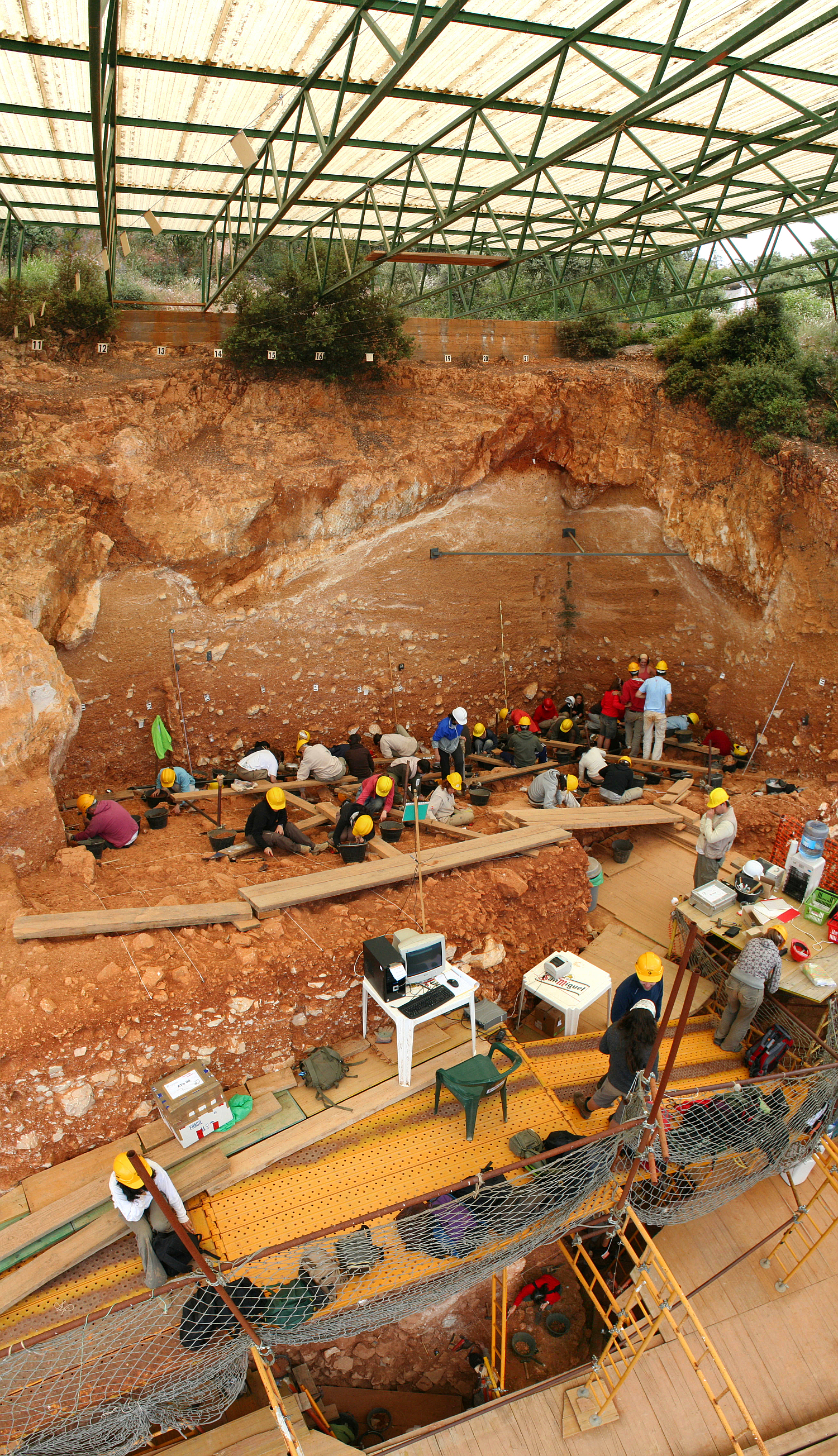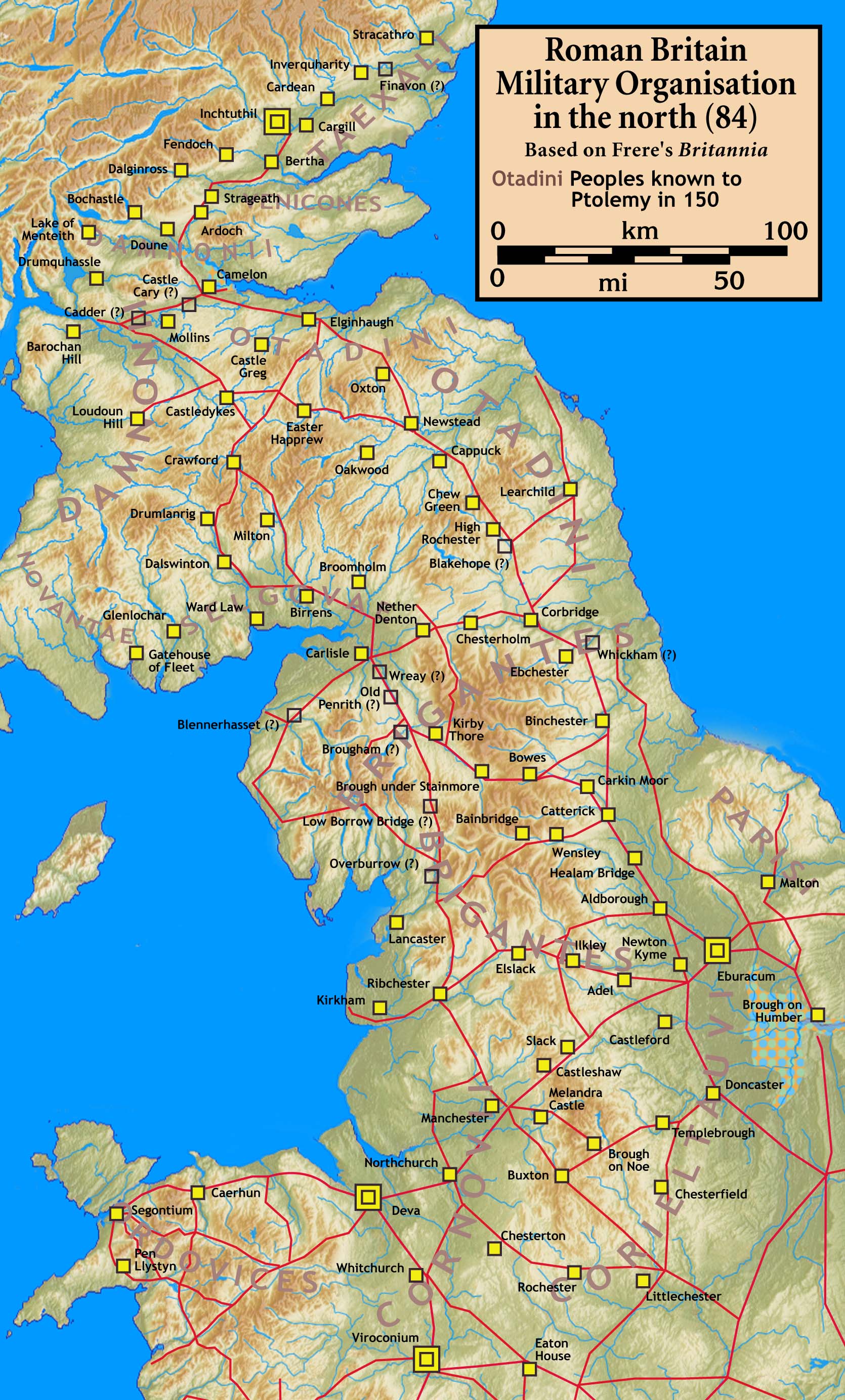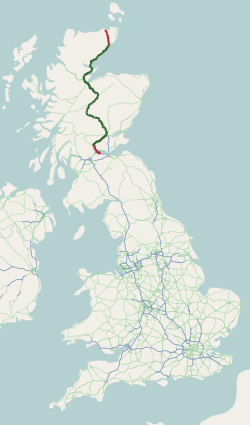|
Watling Lodge
Watling Lodge was a Roman fortlet on the Antonine Wall in Scotland. It was located near what is now Lock Sixteen on the Forth and Clyde Canal in Falkirk with neighbouring forts at Rough Castle to the west and Falkirk to the east. There was also a fort at Camelon to the north. There was also a Roman temporary camp found a short distance south of the site. Description Watling Lodge has been described as the best preserved stretch of ditch from the Antonine Wall still in existence today. It is situated along Tamfourhill Road, south-west of Falkirk. This stretch is excellently preserved. One of the best overviews of the site is the video of the Bridgeness Slab by Falkirk Council, presented by Geoff Bailey, Keeper of Archeology and Local History at Falkirk Museum, from about 4 minutes 30s. In Falkirk, the site is signposted from the A9 and is accessed from the B816, Tamfourhill Road. There is an information panel fairly close to the top of the wall. The panel shows how the Wall may h ... [...More Info...] [...Related Items...] OR: [Wikipedia] [Google] [Baidu] [Amazon] |
Camelon
Camelon (; , ) is a large settlement within the Falkirk council area, Scotland. The village is in the Forth Valley, west of Falkirk, south of Larbert and east of Bonnybridge. The main road through Camelon is the A803 road which links the village to Falkirk. At the time of the 2001 census, Camelon had a population of 4,508. History Human activity at Camelon pre-dates the Romans, as Bronze Age items have been recovered from graves in the area. Camelon is the site of a series of Roman fortifications built between 80 and 83 AD. Camelon has been suggested as the southern fort of the Roman Gask Ridge separating the Highlands from the Lowlands. The Roman fort was under a mile north of the Antonine Wall. A Roman altar was found at Bogton Farm 1000 yards (under a kilometre) west of the fort. A Samian ware platter, possibly also associated with the site was found, and can now be viewed at the Hunterian Museum in Glasgow. Camelon and its connections with Arthur's ... [...More Info...] [...Related Items...] OR: [Wikipedia] [Google] [Baidu] [Amazon] |
Archaeological Sites In Falkirk (council Area)
Archaeology or archeology is the study of human activity through the recovery and analysis of material culture. The archaeological record consists of artifacts, architecture, biofacts or ecofacts, sites, and cultural landscapes. Archaeology can be considered both a social science and a branch of the humanities. It is usually considered an independent academic discipline, but may also be classified as part of anthropology (in North America – the four-field approach), history or geography. The discipline involves surveying, excavation, and eventually analysis of data collected, to learn more about the past. In broad scope, archaeology relies on cross-disciplinary research. Archaeologists study human prehistory and history, from the development of the first stone tools at Lomekwi in East Africa 3.3 million years ago up until recent decades. Archaeology is distinct from palaeontology, which is the study of fossil remains. Archaeology is particularly important for learni ... [...More Info...] [...Related Items...] OR: [Wikipedia] [Google] [Baidu] [Amazon] |
Forts Of The Antonine Wall
A fortification (also called a fort, fortress, fastness, or stronghold) is a military construction designed for the defense of territories in warfare, and is used to establish rule in a region during peacetime. The term is derived from Latin ("strong") and ("to make"). From very early history to modern times, defensive walls have often been necessary for cities to survive in an ever-changing world of invasion and conquest. Some settlements in the Indus Valley Civilization were the first small cities to be fortified. In ancient Greece, large cyclopean stone walls fitted without mortar had been built in Mycenaean Greece, such as the ancient site of Mycenae. A Greek '' phrourion'' was a fortified collection of buildings used as a military garrison, and is the equivalent of the Roman castellum or fortress. These constructions mainly served the purpose of a watch tower, to guard certain roads, passes, and borders. Though smaller than a real fortress, they acted as a border gu ... [...More Info...] [...Related Items...] OR: [Wikipedia] [Google] [Baidu] [Amazon] |
Cohort (military Unit)
A cohort (from the Latin ''cohors'', : ''cohortes''; see wikt:cohors for full inflection table) was a standard tactical military unit of a Roman legion. Although the standard size changed with time and situation, it was generally composed of 480 soldiers. A cohort is considered to be the equivalent of a modern military battalion. The cohort was the most important tactical unit in the Roman army. They could operate independently and offered flexibility and maneuverability, allowing the legions to quickly adapt to different combat situations. The cohort replaced the maniple. From the late second century BC and until the middle of the third century AD, ten cohorts (about 5,000 men total) made up a legion. Cohorts were named "first cohort", "second cohort", etc. The first cohort consisted of experienced legionaries, while the legionaries in the tenth cohort were less experienced. Legionary cohort A legionary cohort of the early empire consisted of six '' centuriae'', or centurie ... [...More Info...] [...Related Items...] OR: [Wikipedia] [Google] [Baidu] [Amazon] |
Blatobulgium
Blatobulgium was a Roman fort, located at the modern-day site known as Birrens, in Dumfriesshire, Scotland. It protected the main western road to Scotland. It was one of the "outpost forts" outside the Roman Empire when the frontier was on Hadrian's Wall and was located about 11 miles from the Castra Exploratorum fort (Netherby, Cumbria). Name Blatobulgium is recorded in the Antonine Itinerary. The name derives from the Brittonic roots ''*blāto-'' 'bloom, blossom' or ''*blāto-'' (from earlier ''*mlāto-''), 'flour' and ''*bolgo-'', 'bag, bulge'. The name may mean 'flowery hillock' or 'flowery hollow'. However, as there are granaries at the fort, Blatobulgium may be a nickname meaning ' Flour Sacks'. History There are several camps near Birrens at least one of which was first occupied in the Flavian period from 79 AD onwards probably during the Agricolan campaigns, when its internal buildings were presumably of timber. Under Hadrian when the frontier was established on ... [...More Info...] [...Related Items...] OR: [Wikipedia] [Google] [Baidu] [Amazon] |
Castlecary
Castlecary () is a small historic village in North Lanarkshire, Scotland, directly adjacent to the border with Falkirk Council, Falkirk. It has long been associated with infrastructure, being adjacent to Red Burn, a bridged river, a Castra, Roman fort and roads, Forth and Clyde Canal, a nationwide canal, a Victorian railway viaduct, and M80 motorway, a modern motorway. Castlecary is close to the town of Cumbernauld but like Dullatur and Luggiebank is not officially part of the town. Around 1725, the barony of Castlecary, with a population of just seventeen families, was disjoined from the parish of Falkirk, and annexed to Cumbernauld Quoad sacra parish, quoad sacra. Castlecary is also near Allandale, Falkirk, Allandale which, though in the Falkirk (council area), Falkirk council area, was built for Castlecary fireclay workers. Roman Heritage Castlecary, like many other settlements in the area, is steeped in the Ancient Rome, Roman history of Scotland. The route of the Antonine W ... [...More Info...] [...Related Items...] OR: [Wikipedia] [Google] [Baidu] [Amazon] |
George Macdonald (archaeologist)
Sir George Macdonald (30 January 1862 – 9 August 1940) was a British Archaeology, archaeologist and Numismatist (specialist), numismatist who studied the Antonine Wall. Life Macdonald was born in Elgin, Moray, Elgin on 30 January 1862. His father, James Macdonald, was a schoolmaster at Elgin Academy, Moray, Elgin Academy and his mother was Margaret Raff. His father moved from Elgin Academy to Ayr Academy during his early youth. Macdonald was educated at Ayr Academy where his father had become rector. He studied in Germany and France, then at the University of Edinburgh and Balliol College, Oxford, graduating Master of Arts in 1887. He then took up a post teaching Classics at Kelvinside Academy. In 1892 he began lecturing in Greek at Glasgow University as Gilbert Murray's assistant. At this time he lived at 21 Lilybank Gardens in Glasgow. Macdonald was involved in archaeological excavations from 1902, when he excavated Bar Hill Fort with Alexander Park. One of his obituaries ... [...More Info...] [...Related Items...] OR: [Wikipedia] [Google] [Baidu] [Amazon] |
A9 Road (Scotland)
The A9 is a major road in Scotland running from the Falkirk council area in central Scotland to Scrabster Harbour, Thurso in the far north, via Stirling, Bridge of Allan, Perth and Inverness. At , it is the longest road in Scotland and the fifth-longest A-road in the United Kingdom. Historically it was the main road between Edinburgh and John o' Groats, and has been called ''the spine of Scotland''. It is one of the three major north–south trunk routes linking the Central Belt to the Highlands – the others being the A82 and the A90. The road's origins lie in the military roads building programme of the 18th century, further supplemented by the building of several bridges in later years. The A9 route was formally designated in 1923, and originally ran from Edinburgh to Inverness. The route was soon extended north from Inverness up to John O'Groats. By the 1970s the route was hampered by severe traffic congestion, and an extensive upgrading programme was undertaken on t ... [...More Info...] [...Related Items...] OR: [Wikipedia] [Google] [Baidu] [Amazon] |
The Bridgeness Slab
The Bridgeness Slab is a Roman distance slab created around 142 CE marking a portion of the Antonine Wall built by the Second Legion. It is regarded as the most detailed and best preserved of the Scottish distance slabs. The sandstone tablet was found at Bridgeness in Bo'ness, Scotland in 1868 on a promontory close to Harbour Road. The original is in the National Museum of Scotland in Edinburgh, while a replica is near the site of its discovery. History The slab was erected 142 CE to mark the completion of a section of the Antonine Wall. It was uncovered during excavations in 1868 on land owned by Henry Mowbray Cadell, whose son Dr Henry Cadell was an eyewitness of its discovery. Cadell offered it to the Society of Antiquaries of Scotland for display in the National Museum of Scotland in Edinburgh if they would provide a copy for display locally. The first on-site replica includes only the centre panel of the original. A second replica, including the side panels, was unveiled b ... [...More Info...] [...Related Items...] OR: [Wikipedia] [Google] [Baidu] [Amazon] |
Falkirk
Falkirk ( ; ; ) is a town in the Central Lowlands of Scotland, historically within the county of Stirlingshire. It lies in the Forth Valley, northwest of Edinburgh and northeast of Glasgow. Falkirk had a resident population of 32,422 at the 2001 United Kingdom census, 2001 UK Census. The population of the town had risen to 34,570 according to a 2008 estimate, making it the List of towns and cities in Scotland by population, 20th most populous settlement in Scotland. Falkirk is the main town and administrative centre of the Falkirk (council area), Falkirk council area, which has an overall population of 156,800 and inholds the nearby towns of Grangemouth, Bo'ness, Denny, Falkirk, Denny, Camelon, Larbert and Stenhousemuir, and the cluster of Falkirk Braes, Braes villages. The town is at the junction of the Forth and Clyde Canal, Forth and Clyde and Union Canal (Scotland), Union Canals, a location which proved key to its growth as a centre of heavy industry during the Industria ... [...More Info...] [...Related Items...] OR: [Wikipedia] [Google] [Baidu] [Amazon] |









